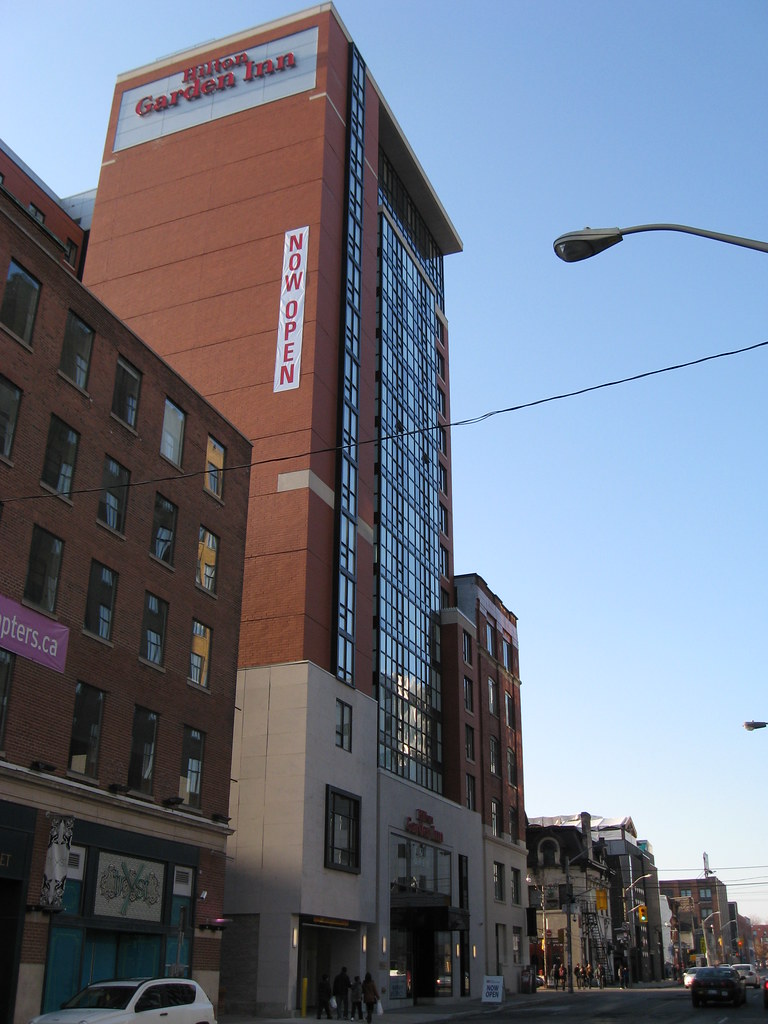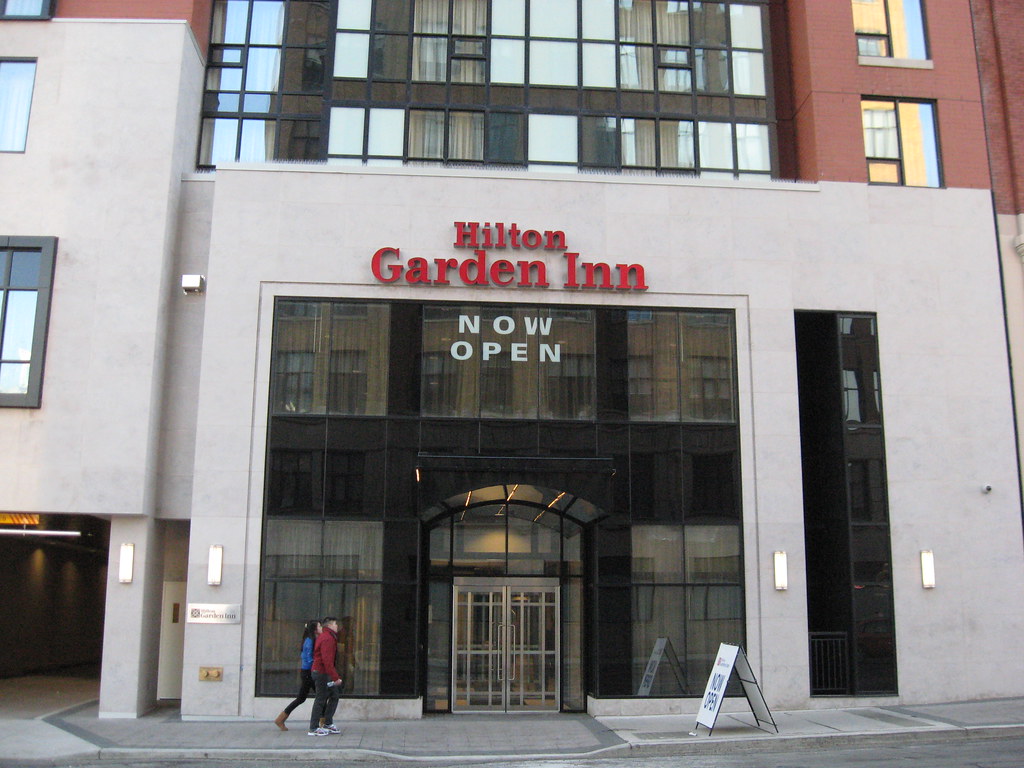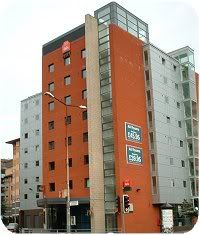Article
Too much room at the Inn
Garry Marr, Financial Post
June 26, 2009
Steve Gupta has got guts. Despite fewer people travelling to Canada because of the swine flu, a rising loonie, the failing economy and new passport restrictions, he's building hotels.
The Toronto hotelier believes in his industry, despite sobering industry statistics such as those this week from STR Global, a hotel research company, showing revenue per available room (RevPAR ) in Canada down a staggering 18.7% from the same period a year ago.
"The truth is, some of these things take time to plan," says Mr. Gupta, chief executive of Markham, Ont.-based Easton's Group of Hotels. "Sometimes, you're half-way there and it's a bit like being half-pregnant. Business is slow but I feel eventually, the economy is going to turn around and you have to be ready for the next upswing."
In April, he opened the $60-million Hilton Garden Inn in downturn Toronto, blocks away from the Rogers Centre, where the Toronto Blue Jays play. He was able to get about $30-million in financing for that project. Even so, the property stands about half-empty most days.
Since then, financing for the industry has all but ground to a halt. Colliers International Hotels said transaction activity last year alone -- things have gotten worse since -- plunged 77% from 2007. The average selling price per room fell to $116,500 from $154,200 during the same period.
When it came to remodelling another of his properties, a Comfort Inn in Toronto's downtown east end that is being converted to the Hilton brand, Mr. Gupta said no reputable bank would give him $4-million for the renovation. "I didn't even bother going. I knew I would have to do it on my own," he says.
Mr. Gupta isn't the only one feeling exposed. Pressure is on hotels to lower rates as intense competition -- some say the worst since the Depression -- has everybody trying to get a piece of a smaller pie. And lowering rates is a hotel company's last resort, because it can take years for them to recover.
In the early part of this decade, after the double hit of the 9/11 terrorist attacks and the 2002 SARS outbreak, hotels were forced to slash rates to get more tourists to travel. Rates didn't recover until 2005. Now, the combination of recession and swine flu has rates falling again.
In a published interview this week, Mark Woodworth, president of PKF Hospitality Research, predicted big U.S. operators such as Marriott International Inc. and Starwood Hotels & Resorts Worldwide Inc. would need four years to get their room rates back to 2008 levels after cutting them.
"I don't panic, but if someone else cuts rates then I have to, and pretty soon everybody else is doing the same thing," says Mr. Gupta.
Mr. Gupta may not be panicking, but others in the sector are.
The average Canadian daily room rate for the week of June 14-20 had fallen to $129.73 per night, a 9% year-over-year decline. On a RevPAR basis, that's $86.64. Occupancies are 66.8%, a 10% decline from a year earlier.
For consumers, this adds up to some astonishing rate deals. One four-star hotel on Toronto's harbourfront, for example, recently slashed rates as low as $79 per night, and at one point was offering Internet-based reservations for $49 per night.
Hoteliers say one problem that needs immediate attention is the passport issue. As of his month, Americans needed a passport to re-enter the United States by car. With only about 30% of Americans holding a passport (compared with 54% of Canadians), the U.S. government is pushing its citizens to get the documents. But many have balked at the US$75-to-US$100 fee, which covers U.S. citizens for a decade.
Greg Klassen, senior vice-president of marketing for the Canadian Tourism Commission, the organization that promotes the industry, understands hoteliers' frustrations. "In the hotel business, it's a product that dies every night. If you don't fill the rooms, you can never get [that money] back," he says.
Canada's travel sector accounts for 10% of all employment in Canada and about 2.5% of gross domestic product, but does not see subsidies comparable to other sectors.
"It exceeds fishery, forestry and agriculture [in terms of economic contribution] put together," says Mr. Klassen. "Tourism is a whole bunch of small and medium business that don't have a big voice. You only have a handful of car companies, but 75,000 businesses that support tourism."
Ottawa is doing more to promote tourism by boosting the CTC's budget. The commission's annual $76-million budget will jump by $20-million in each of the next two tears, with half of the increase aimed at getting Canadians to vacation in Canada.
Outside of Canada, the CTC is targeting select countries: United States, Mexico, France, Germany, United Kingdom, China, Japan, South Korea and Australia.
CIBC World Markets analyst Rossa O'Reilly, who covers the industry, said the fall-off in tourism is so precipitous one has to wonder why there is such preoccupation with the auto sector .
"The sector has received so little in terms of bailouts, and when you think of all the add-ons the typical traveller brings from hotel room taxes and levies, not to mention fees for air tickets, the traveller is beleaguered," says Mr. O'Reilly.
He says the hotel sector has not been in this poor shape since 1932, when RevPAR in the United States dropped 24.7% on a year-over year basis. Statistics don't go that far back in Canada.
"Initially, the decline in revenue per available room was just in occupancies and rates were holding. But in May and June, it's rate cuts as much as occupancies. Hotels are really feeling the absence of visitors," says Mr. O'Reilly. "They will avoid it at all costs but there comes a time when they look at their bookings and they say, ‘We need to get people in here,' and they cut their rates. All the chains are sending out e-mails and taking out ads showing the latest deals."
Tony Pollard, president of the Hotel Association of Canada, said the industry needs to differentiate itself from its U.S. counterparts, although he admits RevPAR in the United States is falling faster than it is in Canada (where it is expected to fall to about $81 from about $83 in 2008). "In most cases we are taking a beating on occupancies," he says, adding he expects occupancy levels in Canada to drop to 61% for 2009 from 63% last year.
But the consumer is also out there looking for a deal, so you have to give them something, says Mr. Pollard. "We are offering more but we are doing it by offering [free] Internet access, a breakfast. If you are at a resort, you might get a round of golf thrown in."
He says cutting rates in a downturn has been shown to have no impact on increasing travel.
"Dropping the rate, and we saw this in 1991, does not stimulate travel," says Mr. Pollard. "You are probably already taking a holiday or already travelling somewhere on business. Research shows dropping rates is not going to get you to stay some extra days."
The industry does have some things working in its favour. While demand has stagnated, there has been very little supply growth in Canada, Mr. Gupta's developments notwithstanding. Growth was only 2.4% in 2008 and will dwindle to 1.5% this year, according to the hotel association. By comparison, growth in 1991 was about 25%.
"This time it's not going to be as difficult for us to fill rooms," says Mr. Pollard.
He's going to have to continue working on his members. The trend line shows occupancies falling fast in Canada. For the first four months of the year, occupancies were just 50.3% nationwide, down from 54% for the same period a year earlier.
And rates, despite Mr. Pollard's contention, are starting to fall in response. The average Canadian daily room rate in April was $112.96, down from $114.01 a year ago. In some cases, hoteliers just have no choice.
http://www.financialpost.com/news-sectors/story.html?id=1737395








